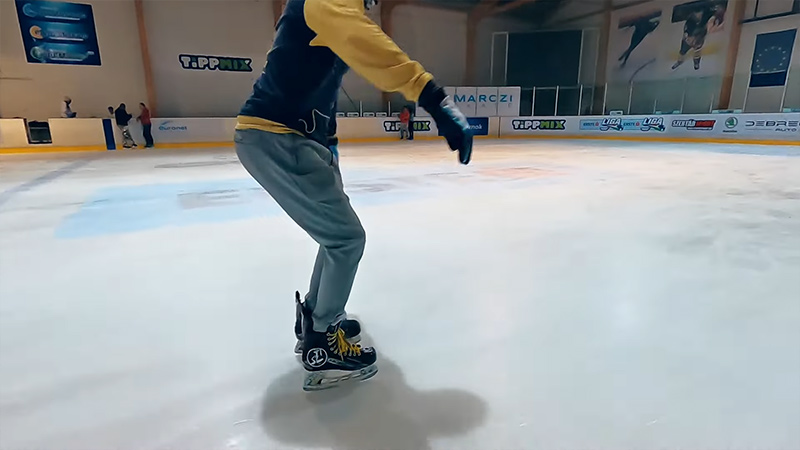Ice skating is a captivating winter pastime that combines artistry, athleticism, and exhilaration.
Beyond the sheer enjoyment it offers, ice skating is a fantastic full-body workout that engages numerous muscle groups, promoting both strength and endurance.
In this blog post, we will explore the intricate connection between ice skating and muscular engagement.
Whether you’re a novice or a seasoned skater, understanding the specific muscles involved can help you optimize your performance, reduce the risk of injury, and enhance your overall fitness.
From the powerful quadriceps and glutes that drive each glide to the core and upper body muscles that maintain balance and control, we’ll delve into the role of various muscle groups in this graceful and dynamic sport.
Get ready to uncover how ice skating can provide a holistic workout, improve your physical fitness, and enhance your skating experience.
What Muscles Does Ice Skating Work?
Ice skating is a full-body workout that engages various muscle groups, providing both cardiovascular benefits and strength conditioning.
The ice skating muscles worked during ice skating can vary depending on the type of skating and the intensity of the activity, but some of the primary muscles engaged include:
Quadriceps
Ice skating relies heavily on the quadriceps muscles, located on the front of your thighs, to push off and glide. These muscles help with forward propulsion and maintaining balance.
Hamstrings
The hamstrings, located on the back of your thighs, are also engaged when extending the legs and maintaining posture on the ice.
Glutes
Your gluteal muscles (gluteus maximus, medius, and minimus) are involved in generating power during skating strides, as well as in maintaining stability and balance.
Calves
The calf muscles (gastrocnemius and soleus) play a role in pointing and flexing your toes while gliding on the ice.
Hip Flexors
The muscles responsible for lifting your legs and flexing your hips are actively engaged during ice skating, particularly during movements like crossovers and jumps.
Core Muscles
Your core muscles, including the abdominal muscles and obliques, help you maintain balance, stability, and a strong posture while skating.
Adductors
The adductor muscles on the inside of your thighs are used when bringing your legs together, such as during crossovers and certain maneuvers in figure skating.
Upper Body
While the lower body does most of the work, ice skating also engages the muscles in your upper body to help with balance, arm movements, and generating extra power.
This includes the muscles in the shoulders, arms, and upper back.
Cardiovascular System
Ice skating provides a cardiovascular workout that can help improve your heart and lung health, as it requires sustained effort and can elevate your heart rate.
Ankles and Feet
The muscles in your ankles and feet are essential for maintaining control and balance while skating.
In addition to these muscle groups, ice skating also promotes joint flexibility, particularly in the hips and knees.
The dynamic and repetitive movements involved in ice skating help improve coordination and overall body fitness.
It’s worth noting that the specific muscles worked can vary depending on your skating style, skill level, and the intensity of your workout.
Regardless, ice skating is an enjoyable way to stay active and engage various muscle groups while having fun on the ice.
The Lower Body Muscles As the Ice Skating Muscles
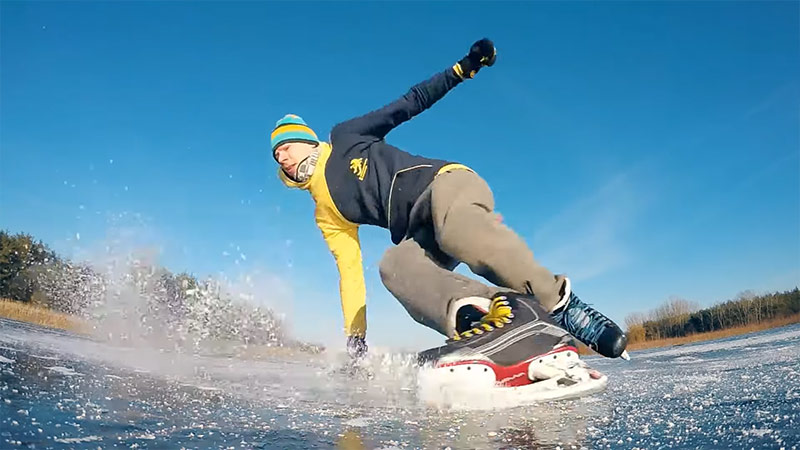
Ice skating primarily engages the lower body muscles, and they play a crucial role in propelling yourself forward, maintaining balance, and executing various skating maneuvers.
Here are the lower body muscles that are heavily worked during ice skating:
Quadriceps
The quadriceps, a group of four muscles on the front of your thighs, are essential for extending your legs and generating power to push off the ice during each stride.
They play a central role in the propulsion of your body forward.
Hamstrings
Located on the back of your thighs, the hamstrings help with bending your knees and maintaining proper posture while skating. They work in opposition to the quadriceps to create balanced leg movements.
Gluteal Muscles
The gluteus maximus, medius, and minimus (the muscles of the buttocks) are engaged to provide power and stability during each stride. They help you maintain an upright position and contribute to the forward motion.
Calves
The calf muscles, including the gastrocnemius and soleus, help point and flex your toes. These movements are important for maintaining control and balance on the ice.
Adductors
The inner thigh muscles, known as the adductors, are heavily involved when bringing your legs together, as in crossovers or when executing tight maneuvers.
Hip Flexors
The hip flexor muscles assist in lifting your legs and flexing your hips, which is crucial for executing various skating techniques, especially in figure skating.
Ankles and Feet
The muscles in the ankles and feet are crucial for maintaining control and balance while skating. Ankle flexibility and strength are particularly important for executing precise movements and maintaining stability on the ice.
The lower body muscles are the primary drivers of movement in ice skating, and they work together to provide the power, balance, and agility needed for different skating styles and techniques.
Regular ice skating can help strengthen and tone these muscles, contributing to improved lower body strength, endurance, and overall fitness.
Core and Abdominal Muscles Used in Ice Skating
Core and abdominal muscles play a significant role in ice skating by providing stability, balance, and control during various skating movements.
These muscles help you maintain an upright posture, control your body’s orientation, and execute precise maneuvers.
Here are the core and abdominal muscles used in ice skating:
Rectus Abdominis
The rectus abdominis, commonly referred to as the “six-pack” muscles, is located in the front of the abdomen.
It is involved in maintaining a strong and stable core, especially when you need to lean forward or backward while maintaining balance.
Obliques
The oblique muscles (external and internal obliques) are found on the sides of the abdomen. They are essential for twisting movements and for maintaining control during turns and crossovers in ice skating.
Transverse Abdominis
The transverse abdominis is a deep-lying muscle that acts like a natural corset, providing stability to the core and helping to support the spine. It plays a crucial role in maintaining proper posture and balance while skating.
Lower Back Muscles
The lower back muscles, including the erector spine, help stabilize the spine and work in conjunction with the abdominal muscles to maintain an upright position while skating.
Hip Flexors
While the hip flexors are primarily lower body muscles, they are considered part of the core due to their role in flexing the hips and lifting the legs.
This is important for executing certain skating techniques, especially in figure skating.
Engaging these core and abdominal muscles is crucial in ice skating, as they help you maintain control over your movements and body position.
A strong and stable core is essential for executing advanced maneuvers and transitions in skating, as well as for preventing injury by protecting the spine and maintaining balance.
Incorporating specific core and abdominal exercises into your training routine can help improve your overall skating performance and make you a more proficient skater.
The Back and Spinal Muscles for Ice Skating
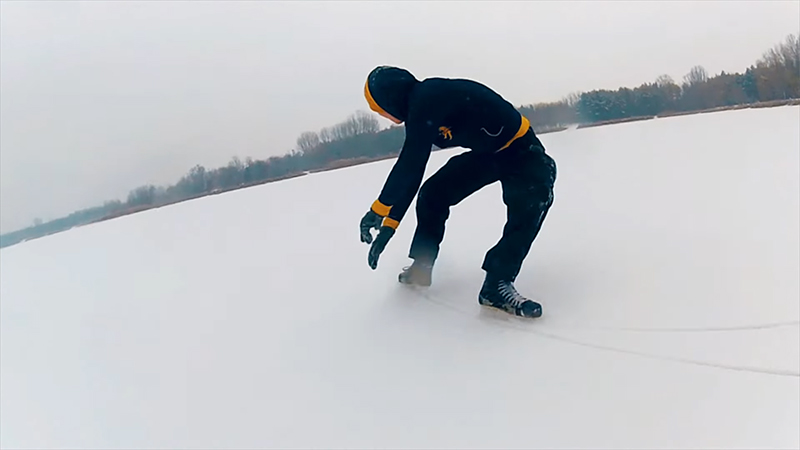
The back and spinal muscles are important for maintaining an upright posture, providing stability, and enabling controlled movements in ice skating.
While the lower back muscles and core muscles also contribute to spinal support, the muscles of the upper back and spine play a role in maintaining overall body alignment and balance.
Here are the back and spinal muscles that are used in ice skating:
Erector Spinae
The erector spinal muscles are a group of muscles that run along the spine and help to keep it upright and stable.
These muscles assist in maintaining an erect posture while skating, which is crucial for balance and control.
Trapezius
The trapezius muscles are located in the upper back and neck region. They are involved in shoulder movement and control.
Proper shoulder positioning is important in ice skating to maintain balance and execute arm movements, especially in dance and figure skating.
Rhomboids
The rhomboid muscles, located between the shoulder blades, help to retract the shoulder blades and maintain shoulder stability. They are essential for keeping the upper body aligned and preventing slouching.
Latissimus Dorsi
The latissimus dorsi muscles, commonly known as the lats, are the broad muscles in the mid-to-lower back.
These muscles assist in arm and shoulder movements, particularly when using the arms to generate power and control.
Spinal Erectors
These muscles are responsible for extending the spine and are important for maintaining an upright posture. They provide support to the spine during various skating maneuvers.
In ice skating, especially during figure skating and dance routines, proper posture and spinal alignment are critical for executing elegant and precise movements.
Skaters need to engage these back and spinal muscles to maintain balance and control, as well as to execute graceful arm and leg movements.
While the lower body muscles and core muscles are heavily engaged in ice skating, the back and spinal muscles play a supporting role in ensuring that the skater maintains an aligned and controlled position throughout their performance.
Strengthening and conditioning these muscles can help improve your skating performance and prevent back-related injuries.
Arm and Shoulder Muscles for Ice Skating
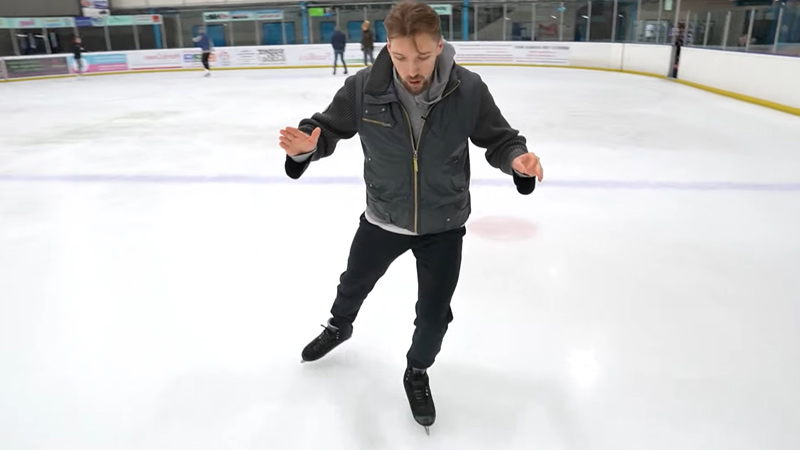
Arm and shoulder muscles are important for balance, coordination, and generating power in ice skating, particularly in styles that involve complex arm movements and spins.
These muscles also help with maintaining body control and alignment. Here are the arm and shoulder muscles used in ice skating:
Deltoids
The deltoid muscles, consisting of the anterior (front), medial (middle), and posterior (rear) deltoids, play a crucial role in arm movements.
They help lift and lower the arms, move them forward and backward, and rotate them, which is important for generating momentum and balance in various skating techniques.
Biceps and Triceps
The biceps are the muscles on the front of the upper arm, while the triceps are located on the back.
These muscles contribute to the flexing and extending of the elbow, allowing for controlled arm movements during skating.
Rotator Cuff Muscles
The rotator cuff muscles are a group of muscles and tendons that provide stability and control for shoulder movements.
They are essential for fine-tuning the positioning of the arms and shoulders, especially in spins and jumps.
Teres Major and Teres Minor
These muscles help with the rotational movements of the shoulder joint. They assist in executing controlled arm motions during various skating elements.
Trapezius
The trapezius muscles, located in the upper back and neck, are used for shoulder elevation and control. They play a significant role in maintaining balance and posture during skating.
Pectoral Muscles
The pectoral muscles (pecs) are the chest muscles and are involved in arm adduction (bringing the arms toward the midline of the body) and arm positioning during different skating moves.
Forearm Muscles
The muscles of the forearm, including the flexors and extensors, help control wrist movements and the position of the hands.
This is important for executing specific arm and hand gestures in figure skating and dance routines.
The engagement of arm and shoulder muscles varies depending on the style of ice skating.
In figure skating and dance, intricate arm movements and positions are a significant part of the performance, making these muscles essential for creating elegant and graceful routines.
In speed skating and hockey, arm and shoulder muscles are used for balance and stability, as well as for generating power during pushes and turns.
To improve your ice skating performance and reduce the risk of injury, it’s important to include arm and shoulder conditioning exercises in your training routine, particularly if you are involved in figure skating or dance.
Strengthening these muscles can enhance your control, coordination, and overall skating ability.
Cardiovascular Benefits of Skating
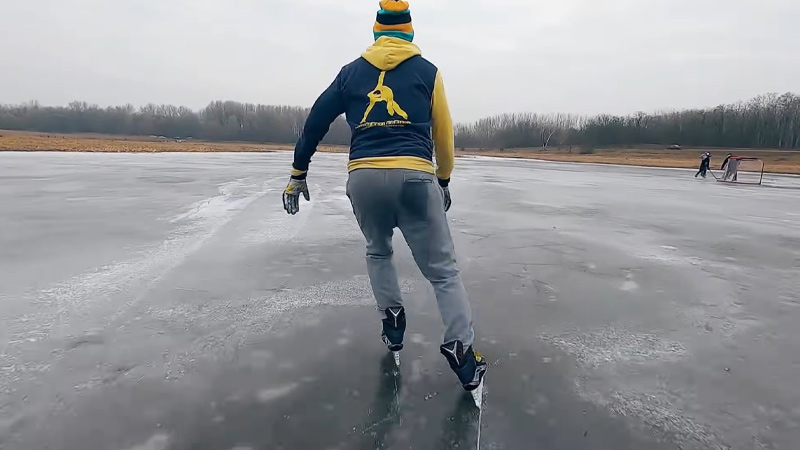
Ice skating offers several cardiovascular benefits that can improve your heart and lung health.
Engaging in this activity can provide an effective and enjoyable way to get your heart rate up and improve your overall cardiovascular fitness. Here are some of the cardiovascular benefits of skating:
Improved Heart Health
Ice skating is an aerobic exercise that increases your heart rate, strengthening your heart muscle and improving its overall efficiency. This can reduce the risk of heart disease and other cardiovascular issues.
Increased Lung Capacity
Skating is a form of aerobic exercise that requires deep and controlled breathing. Over time, this can lead to an increase in lung capacity and improved respiratory function.
Enhanced Circulation
Skating increases blood flow throughout your body, which can help improve circulation, reduce the risk of blood clots, and promote better oxygen and nutrient delivery to your muscles and organs.
Weight Management
Skating burns calories and can help with weight management. Maintaining a healthy weight is essential for heart health and can reduce the risk of obesity-related cardiovascular problems.
Lower Blood Pressure
Regular cardiovascular exercise, like ice skating, can help lower blood pressure, making it an effective way to manage hypertension.
Improved Cholesterol Levels
Skating can increase levels of high-density lipoprotein (HDL) cholesterol, which is considered “good” cholesterol. Higher HDL levels are associated with a lower risk of heart disease.
Stress Reduction
Physical activity, including ice skating, triggers the release of endorphins, which can help reduce stress and improve overall mental well-being. Reducing stress is beneficial for heart health as well.
Enhanced Endurance
Skating can improve your cardiovascular endurance, allowing you to engage in longer and more intense workouts, which, in turn, can further boost your cardiovascular health.
Reduced Risk of Stroke
Regular physical activity, such as skating, can lower the risk of stroke by improving blood vessel health, reducing inflammation, and enhancing overall cardiovascular function.
Better Insulin Sensitivity
Skating can help improve insulin sensitivity, which is important for managing blood sugar levels. Enhanced insulin sensitivity reduces the risk of type 2 diabetes, a condition that can increase the risk of cardiovascular problems.
To maximize the cardiovascular benefits of skating, it’s essential to engage in regular, sustained aerobic activity. This can include both recreational skating and more intense training sessions.
If you’re new to skating or have any underlying health conditions, it’s a good idea to consult with a healthcare professional before starting a new exercise routine.
Additionally, always warm up properly and wear appropriate safety gear when participating in ice skating to prevent injuries.
FAQs
What are ice skating muscles used for?
Ice skating primarily engages muscles in the lower body, including the quadriceps, hamstrings, calves, and glutes.
These muscles work together to propel the skater forward, maintain balance, and execute various maneuvers.
What muscles are used in ice skating?
Ice skating works a combination of leg muscles, such as the quadriceps, hamstrings, adductors, and gluteus muscles, which are crucial for generating power and stability.
The core muscles also play a role in balance and posture control.
Does ice skating build muscle?
Yes, ice skating can help build and tone muscles, particularly in the lower body.
The repetitive motions and resistance against the ice provide a form of strength training, contributing to muscle development and improved endurance.
Is ice skating good exercise?
Ice skating is an excellent form of exercise.
It offers a full-body workout, enhances cardiovascular fitness, and helps improve balance and coordination. It’s an enjoyable way to stay active and burn calories.
What muscles do figure skaters use?
Figure skaters utilize a wide range of muscles.
In addition to leg muscles, they engage the core for stability, arm and shoulder muscles for balance during spins and lifts, and the lower back muscles to maintain proper posture and form during intricate routines.
Wrapping Up
Ice skating is not just a delightful winter activity; it’s a comprehensive exercise that challenges and fortifies numerous muscle groups.
By understanding the specific muscles engaged during skating, enthusiasts can tailor their workouts and appreciate the holistic benefits it provide.
From the leg powerhouses like quadriceps and hamstrings that drive forward propulsion to the core and upper body muscles that maintain balance and finesse, skating’s physical demands are vast.
This graceful yet dynamic sport not only improves muscular strength but also enhances cardiovascular health and overall endurance.
So, whether you’re gliding on a frozen pond for leisure or pursuing competitive figure skating, the muscles you engage in this mesmerizing activity offer an all-encompassing fitness experience.
Embrace the beauty of ice skating, not just for its aesthetics, but for the robust workout it offers, making it a wonderful addition to your winter fitness routine.

